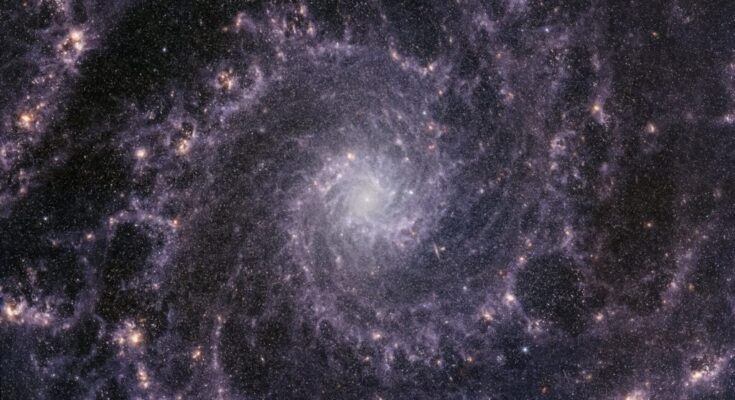
The James Webb Telescope looked into the past and found a strange galaxy that shone so brightly that it was more brilliant than the stars.
The James Webb Telescope found galaxy GS-NDG-9422, which came into existence about a billion years after the Big Bang. After studying the data, astronomers discovered that the galaxy shone brightly because of space gas and not because of stars.
The galaxy is believed to be burning at an astounding 144,000 degrees Fahrenheit. Astronomers believe this discovery will help uncover the origins of galaxies and how they manage to become a well-structured conglomerate of stars. The strange galaxy could be a window into the universe’s beginning and formation.
“My first thought in looking at the galaxy’s spectrum was, ‘that’s weird,’ which is exactly what the Webb telescope was designed to reveal: totally new phenomena in the early universe that will help us understand how the cosmic story began,” said lead researcher and observational astronomer Alex Cameron of the University of Oxford.
Besides its brightness, this weird galaxy is pretty covert compared to what is around it in the visible universe. The strange brightness stood out to Cameron, and the team later concluded it could only be superheated gas. The theory is that the superheated gas indicates that GS-NDG-9422 could have been in the process of forming countless stars.
Harley Katz, a theorist from the University of Chicago, found that models of superheated cosmic clouds being heated by stars matched exactly what the James Webb telescope discovered.
“It looks like these stars must be much hotter and more massive than what we see in the local universe, which makes sense because the early universe was a very different environment,” said Katz.
The weird galaxy mystery could be cracked by heat
When comparing the strange galaxy GS-NDG-9422 to the usual galaxies observed in the universe, scientists found that GS-NDG-9422 was significantly hotter. This galaxy burned at double the temperature of the average galaxy.
While GS-NDG-9422 was measured at 144,000 degrees Fahrenheit, the typical galaxy measures between 70 and 90 thousand degrees Fahrenheit. The strange galaxy was also found not to have what are known as Population III stars, which were created closest to the time of the Big Bang. This adds to the mystery, as scientists speculate the galaxy could have a new kind of star previously unobserved.
“We know that this galaxy does not have Population III stars because the Webb data shows too much chemical complexity. However, its stars are different than what we are familiar with—the exotic stars in this galaxy could be a guide for understanding how galaxies transitioned from primordial stars to the types of galaxies we already know,” said Katz.



